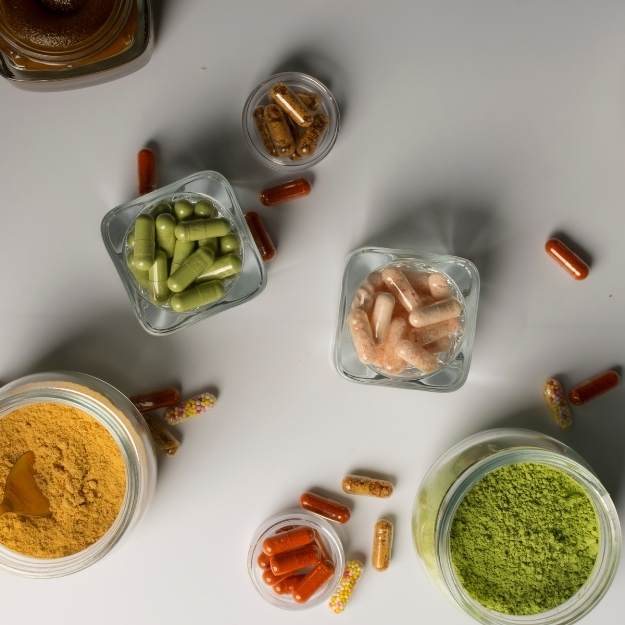A long, healthy life requires not only proper nutrition and exercise, but also nurturing emotional and social well-being. Our holistic practice, ORY and Natura Healing Practice, supports you in balancing these aspects. Let's explore the seven most important factors that will prolong your life and the four habits you should avoid.

The 8 life-prolonging factors
1. Clear life goals and self-love
Finding meaning is at the heart of a fulfilling life. The more you love yourself, value your actions, and realize your desires, the more happiness you will experience. One exercise to help you achieve this: Follow your small needs. Write down what you desire every day and implement at least one small thing. This way, you learn to recognize and respect your own needs. This awareness leads to more self-love, contentment, and a deeper meaning in life.
2. A happy marriage
A happy partnership is challenging, but it also offers the greatest opportunity for self-reflection. A loving relationship creates a shared team that finds a common purpose. This connection creates stability and a sense of belonging. Our practice supports you through couples counseling to promote harmony and mutual understanding, which form the foundation of a happy marriage.
3. A large social environment
General connection and belonging to a community provide security and vitality. However, this community must be meaningful and fulfilling to develop your full potential for well-being. Through group activities and social programs, we help you find the right circles that enrich and stabilize your life.
4. Extroversion
Extroversion means being open to social interactions and new experiences. This trait strengthens mental health and well-being. You can develop extroversion by consciously approaching people, immersing yourself in social activities, and trying new hobbies. Small steps like smiling in your daily life or approaching new contacts can make a difference.
5. Healthy diet and exercise
A healthy diet and regular exercise are pillars of a long life. Integrate these aspects into your daily routine by finding your own rhythms: Start with a sun salutation in the morning, schedule time for exercise, and cook fresh meals. Small changes like a walk after dinner or mindful cooking with fresh ingredients can make a big difference.
6. Actively promote health
Actively promoting health involves self-care and body awareness. This includes providing essential vitamins, minerals, and amino acids, strengthening mitochondria, detoxification, and promoting gut health. Our practice offers diagnostics and programs to help you regain vitality and strength.
7. Friendliness and curiosity
Kindness alone may seem superficial, but when combined with genuine interest and curiosity about others and the world, it creates true connection. Curiosity sparks new insights and leads to inspiring encounters. Practice mindful listening and asking questions to enrich your relationships and develop a deeper understanding of those around you.
8. Conscientiousness
Conscientiousness means being honest with yourself and others. Dishonesty puts a long-term strain on your system and leads to stress. Through reflection and consciously making decisions with integrity, you can stabilize your life and reduce stress. We support you in cultivating these important qualities and creating a more harmonious everyday life.

The four life-shortening factors
1. Loneliness
Chronic loneliness can dramatically increase the risk of death. With our community programs and social events, we create opportunities to overcome loneliness.
2. Lack of optimism
Optimism is a key to a long life. Our practice offers mental training and meditation techniques to promote a positive outlook on life.
3. Neurotic behavior
Neuroticism is a health hazard. We help you manage stress and find inner balance.
4. Side effects of medication
Long-term use of medications, especially painkillers and other drugs with potential side effects, can negatively impact your health. "With every pill you take, you can experience new side effects," says Prof. Dr. Petra A. Thürmann.
According to the Federal Institute for Drugs and Medical Devices, there are up to 300,000 cases of adverse reactions in Germany each year. Bremen health researcher Gerd Glaeske estimates that there are 16,000 to 25,000 deaths annually due to adverse reactions and drug interactions.
These often include stomach bleeding and ulcers associated with painkillers, severe hypoglycemia caused by diabetes medications, or severe damage caused by cardiovascular medications. In a certain form of heart failure alone, 70 to 80 percent of patients develop additional problems as a result of treatment.
Our holistic therapies and alternative approaches help you reduce the need for medication while providing long-term relief from symptoms.

Bremen health researcher Gerd Glaeske estimates that there are 16,000 to 25,000 deaths annually due to side effects and interactions.
Conclusion
A healthy life requires more than diet and exercise—it requires emotional balance, strong relationships, and a clear purpose in life. Our holistic practice, ORY and Natura Healing Practice, will accompany you on this path. Together, we will shape your life full of vitality and joy.



Share:
Massage: A bridge to relaxation and health